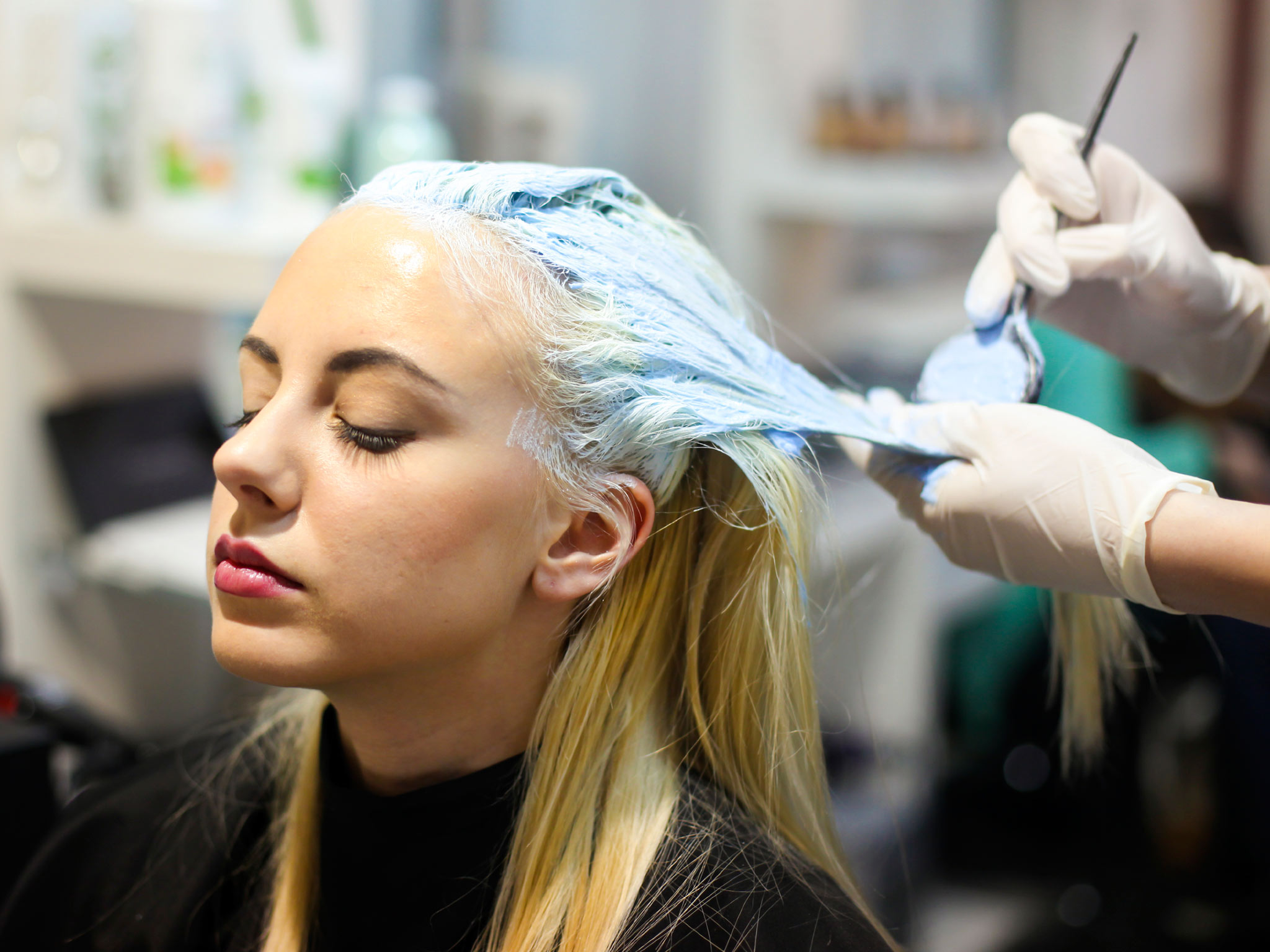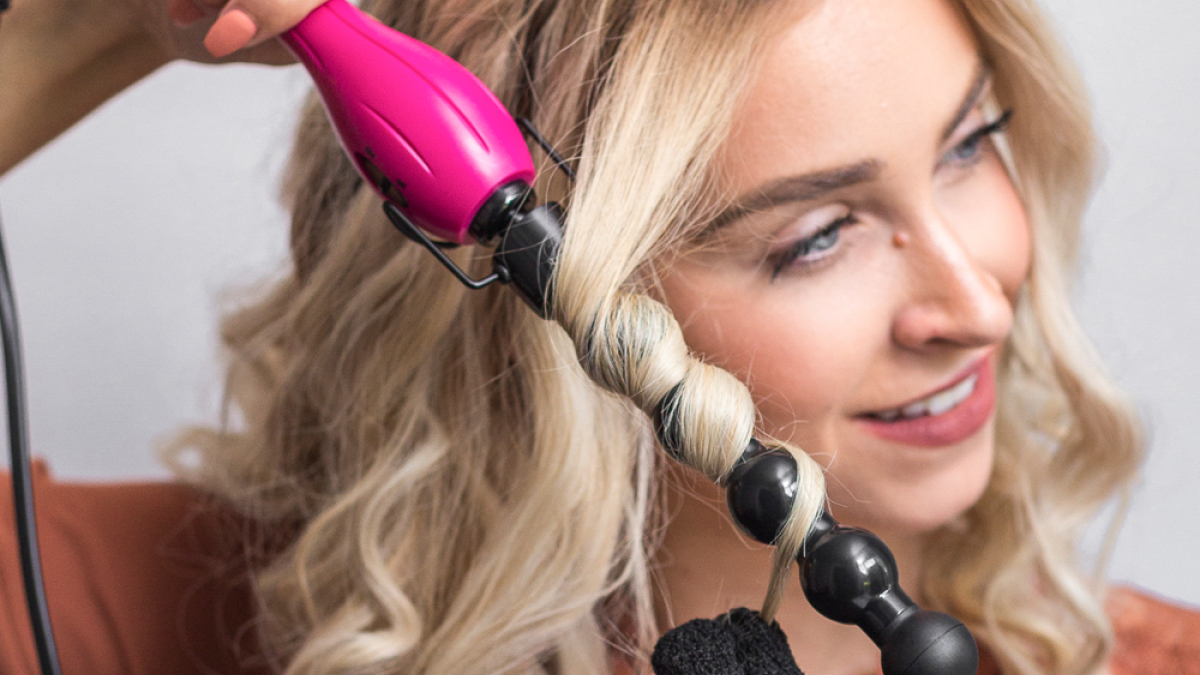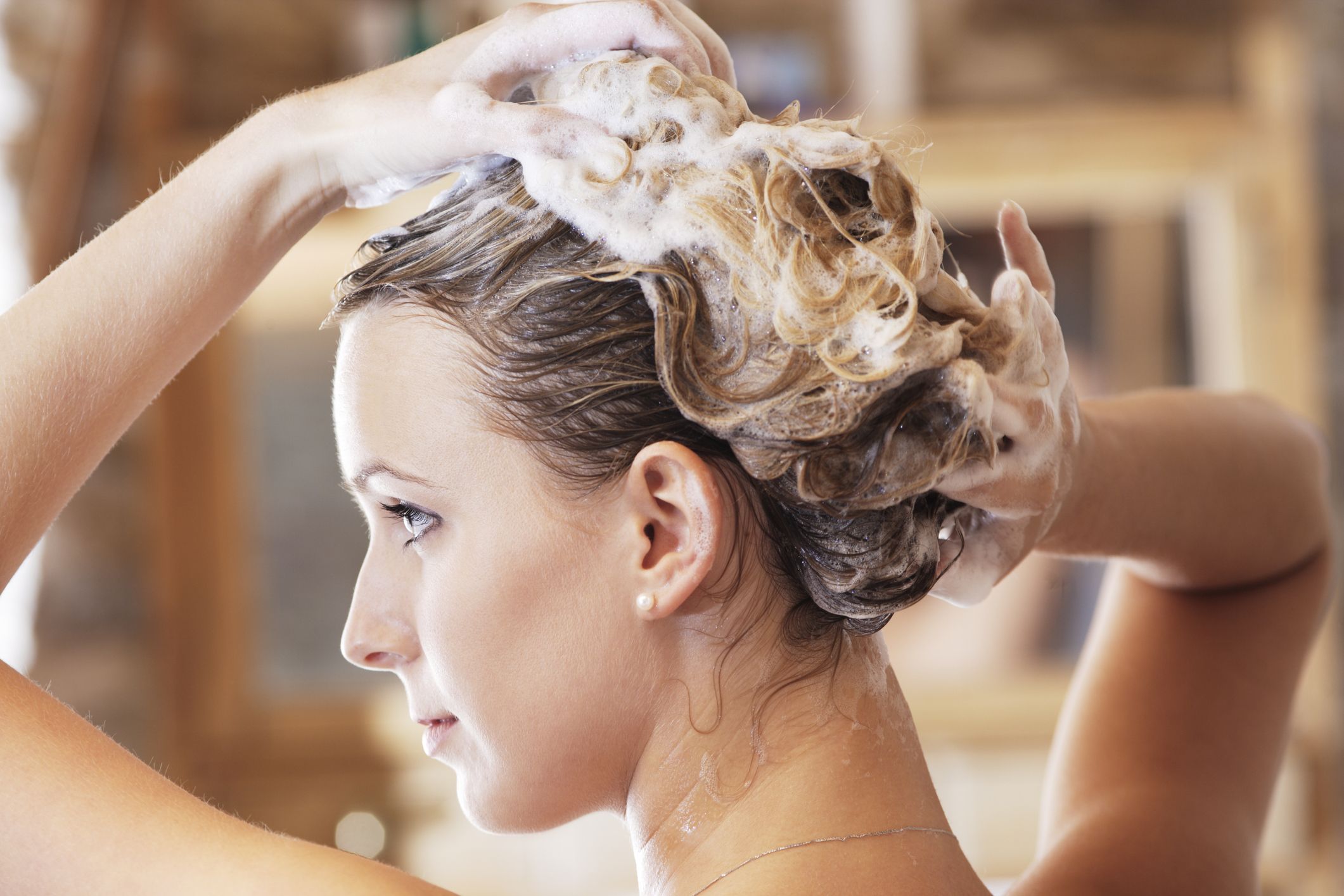Introduction to Hair Health
Do you believe your hair is in good condition just because it appears fine in the mirror? The reality might be different, as it could be prone to brittleness and breakage. Understanding the structure of hair is essential; it comprises the medulla, cortex, and cuticle. The outermost layer, the cuticle, resembles scales. Damage to the cuticle exposes the cortex, leading to hair damage.

Understanding Hair Damage
Damage occurs when the cuticle, with its scaly structure, is compromised, resulting in lifted scales. This can make the hair feel rough, frizzy, or even look damaged. With the cuticle damaged, the cortex lacks protection and nutrients, causing loss of luster, elasticity, and split ends. Furthermore, damaged scalp follicles contribute to brittle, lackluster hair. Tangling and moisture loss worsen the situation, making repair challenging even with treatment.
Types of Hair Damage
Hair damage manifests in various forms, with four main types:
- Split Ends
Split ends are the most common and noticeable form of damage, making hair appear messy and unkempt. Strands split into finer or multiple ends, resembling branches, robbing hair of essential nutrients and vitality. - Rough Texture
Hair with a rough texture feels coarse and uneven to the touch. Running fingers along the strands or combing from the bottom up can reveal bumps or friction, indicating damage. - Dull Hair
Damage to the cuticle and cortex results in dull hair lacking shine and vitality. Cracked cuticles signify underlying damage, affecting the overall appearance of the hair.
Conclusion
Understanding the signs of hair damage is crucial for effective hair care. Identifying the type of damage helps in selecting appropriate treatments and preventive measures. With proper care and attention, it’s possible to maintain healthy, vibrant hair. Solxyz, let’s prioritize hair health in our daily routine.
Haircare Tips for Healthy and Shiny Hair
- Retain Moisture:
Hair tends to lose its shine when the cortex, its inner layer, gets exposed to the air, causing moisture loss. To combat this, it’s advisable to incorporate conditioning oils into your haircare routine post-shampooing to restore shine. However, it’s crucial to strike a balance, as excessive conditioning or styling can also strip away moisture. Overwashing your hair can also lead to dullness, especially for permed or dyed hair. - Taming Dry and Unruly Hair:
Waking up to a tangled mess of hair might be a common occurrence for some. If you find yourself in this predicament often, it’s time to reassess your haircare practices. Have you regulated the temperature of your hair dryer? Do you brush your hair gently post-blow-drying? Are you using suitable haircare products post-cleansing? Even the choice of pillow material can impact your hair’s health. Neglecting these aspects can lead to hair damage, necessitating more attention to prevent further deterioration. - Addressing Thinning Hair or Hair Loss:
Hair thinning or loss can result from various factors, including fragile hair strands or damaged scalp follicles. While some individuals naturally have thinner hair, noticeable thinning may indicate underlying issues. Conditions like alopecia areata, characterized by hair falling out from the roots, require prompt attention. Seeking professional treatment or utilizing specialized equipment at home may be necessary to stimulate hair regrowth. - Causes of Hair Damage:
Hair damage can stem from multiple sources, with environmental factors being significant contributors. Exposure to sunlight, with its harmful UV rays, can penetrate the hair’s layers, leading to damage. Wind, often overlooked, can cause friction and weaken the hair cuticle over time. Similarly, chlorine exposure, prevalent in swimming pools and certain water sources, can corrode the hair cuticle and impede growth. - Mechanisms of Damage:
Mechanical factors, such as hairstyling practices, also play a pivotal role in hair health. Certain hairstyles, when done improperly or excessively, can strain the hair shafts and lead to breakage. Additionally, the frequent use of heat styling tools without adequate protection can cause irreparable damage. It’s essential to strike a balance between styling and maintaining the structural integrity of your hair.

By adopting mindful haircare practices and addressing potential sources of damage, you can nurture healthy, lustrous hair. Remember, consistency and moderation are key in achieving and maintaining optimal hair health.
Hair can undergo various styles such as sleek ponytails, tightly wound top-knots, braids framing the face, voluminous bouffants, or even styling with damp hair, among others. All these hairstyles have the potential to strain the hair to different extents. Excessive tension on the hair can lead to its weakening, resulting in breakage along the shaft. Additionally, if the scalp follicles are aggravated, it can lead to the roots being pulled up, causing a disconnection between the cuticle and the cortex, ultimately leading to localized hair loss.
Personal Habits: Engaging in detrimental personal habits can also contribute to hair damage. It’s advisable to avoid habits such as vigorously rubbing the hair and scalp while washing, skipping conditioner or other hair care products after cleansing, using rough towels for drying, or aggressively brushing wet hair.
Styling Tools: Furthermore, the use of improper styling tools, such as a blow dryer or brushes unsuitable for your hair type, can also inflict damage. Some hairstylists advocate the use of razors to achieve certain styles, falsely claiming it stimulates hair growth. However, razors can cause split ends and are not beneficial for hair health.
Thermal Damage: Excessive use of heat tools like curling irons can severely damage hair shafts, stripping them of moisture and making them brittle, leading to breakage. Styling with heat can essentially “cook” the hair fibers, depriving them of essential nutrients and resulting in dryness.
Water Temperature: Using excessively hot water while washing hair can scald the scalp and damage the hair surface. It’s recommended to use warm water to avoid such damage, as hair and scalp are more delicate compared to the skin.

Chemical Damage: Chemical treatments such as hair dyes, bleaches, and texturizers can cause significant harm. The ammonia content in dyes and bleaches can weaken the hair structure, while texturizers alter the cortex’s shape, leading to permanent changes.
How to Treat Damaged Hair?
Regaining healthy hair without breakage requires effort. Here are some effective and simple ways to help repair damaged hair and prevent future damage:
Avoid prolonged exposure to UV radiation, as it can weaken the hair and cause damage over time. Use protective measures such as wearing hats or applying UV protection products.
Moisturize regularly with hydrating hair masks or oils to replenish moisture lost from styling and environmental factors.
Trim hair regularly to remove split ends and prevent further damage from spreading along the hair shaft.
Use gentle, sulfate-free shampoos and conditioners suitable for your hair type to avoid stripping away natural oils and causing dryness.
Minimize heat styling and opt for heat-free styling methods whenever possible to reduce the risk of thermal damage.
By adopting these hair care practices, you can effectively treat and prevent damage, helping your hair regain its health and vitality.
Protect Your Hair from Environmental Damage with
Exposure to radiation from the sun can be harsh on your hair, especially during the summer months. Shielding your hair from harmful UV rays is crucial, and one effective method is through physical sun protection. Consider covering up your hair with a hat when you’re out and about. For those who still want to flaunt their locks, wigs and toppers can be a stylish solution. Opt for wigs made with high-quality materials, as they are easier to style, cut, and dye. However, bear in mind that these wigs often demand more maintenance than Solxyz. While human hair wigs may be pricier, they offer superior breathability, ensuring your scalp remains comfortable. Additionally, applying sunscreen or UV protection to your hair before venturing out can provide added defense against the sun’s rays.

Guarding Against Strong Winds with
During windy weather conditions, it’s advisable to either drive to your destination or wear a helmet if you’re riding a bike. This precaution helps minimize the friction of air against your hair, reducing potential damage. Don’t forget to tie your hair up to prevent tangling when stepping out into the wind.
Limit Exposure to Chlorine with
Swimmers should take precautions to protect their hair from the damaging effects of chlorine. Prior to swimming, ensure you have hair care products readily available. Chlorine found in pool water can strip your hair of its natural oils, leading to damage. Consider wetting your hair in the shower or applying conditioner before swimming to create a protective barrier. Wearing a swim cap and minimizing hair immersion can also help safeguard your locks. Following your swim, use a gentle shampoo and conditioner to replenish moisture and prevent damage.
Experiment with Different Hairstyles with
Changing your hairstyle can promote healthier hair growth. Avoid overly tight hairstyles like high ponytails or braids, as they can cause tension and breakage. Opt for looser styles or consider using wigs or toppers for added versatility. Toppers offer a convenient way to add volume and conceal damaged areas, making them an excellent choice for those with hair concerns.
Proper Hair Washing Techniques with
Maintaining proper hair washing practices is essential for hair health. Adjust the frequency and intensity of washing based on your hair type and condition. Massage your scalp gently with your fingertips to stimulate circulation and avoid scratching with your nails. Overwashing can strip your hair of its natural oils, leading to dryness and premature color fading. Use lukewarm water instead of hot water, as it is gentler on the hair and scalp. Choose a moisturizing shampoo and consider incorporating an apple cider vinegar rinse for added hydration and shine.
Hydration and Moisturization for Healthy Hair with
Ensuring optimal hydration penetrates deep into the hair shaft is crucial for safeguarding your hair against further damage and effectively treating hair breakage. Opt for a deep conditioner to proactively prevent hair breakage. Unlike regular conditioners, a leave-in conditioner, or hair oils/masks, will imbue your hair with unparalleled smoothness and softness while sealing in moisture and enhancing shine. To enhance the prospects of superior hair health, meticulously select hair care products tailored to your specific requirements. For those with fine, thin, or oily hair, opt for lightweight moisturizers such as aloe vera juice and glycerin. Conversely, individuals with coarse, thick, or dry hair may find solace in rich moisturizing components like coconut oil and fatty acids. It’s prudent to avoid potentially harsh ingredients like sulfates and drying alcohols to maintain hair vitality.
. Bid farewell to traditional bath towels when drying your hair, as they can contribute to hair breakage, frizz, and brittleness. The coarse texture of cotton towels is particularly detrimental to delicate hair strands. Instead, opt for a microfiber towel or a soft cotton T-shirt post-wash to gently blot excess moisture from your hair. These materials are gentler, softer, and more absorbent, facilitating quicker drying. Alternatively, air-drying your hair is a viable option.
. Avoid brushing wet hair to mitigate the risk of breakage. When hair is wet, the shaft swells and becomes more susceptible to damage. Brushing wet hair can disturb the protective scaly layer on the hair’s surface, leading to breakage. Opt for brushing before washing, after applying conditioner, or post-blow drying. Ensure the brush bristles are soft and smooth, steering clear of plastic options. A wide-tooth comb is recommended to prevent breakage. Allow your hair to partially air dry before gently combing it in sections to minimize strain on individual hair strands.
. Exercise restraint when using heat styling tools to prevent hair breakage. Opt for the lowest heat setting and limit heat treatments whenever possible. Consider upgrading outdated heat tools, as they may lack effective temperature control. Embrace air drying as an alternative styling method, utilizing the coldest setting on your tools sparingly. When selecting a hair straightener, prioritize ceramic plates for even heating and hair protection. Avoid using heat styling tools on wet hair, as it can lead to boiling water within the hair shaft and subsequent breakage. Incorporate heat-protectant gels or serums into your styling routine to fortify your hair against heat damage.

Regular trims are paramount in halting hair breakage and maintaining overall hair health. Schedule routine haircuts every four to eight weeks to eliminate dry and split ends, fostering healthy hair growth. Adopt a gradual trimming approach if you desire to retain length while addressing split ends.
Investing in high-quality hair accessories can complement your hair care regimen. Choose accessories that are gentle on the hair and minimize pulling or snagging, thereby reducing the risk of breakage. Opt for accessories made from materials like silk or satin to prevent friction-related damage.
Introducing : Hair accessories hold a special place in every girl’s heart. However, subpar hair accessories not only lack in decorative appeal but also pose a risk to the health of your hair. Take, for instance, inferior hair ties made from coarse materials that tug at the scalp and hair follicles, potentially leading to traction alopecia. Do you often find strands of hair clinging to your hair tie when you remove it? That’s a telltale sign. Similarly, rigid and pointed clips, weighty diamond-encrusted hairbands, and tiny elastic bands can inadvertently cause damage to your hair. Therefore, it’s imperative to meticulously choose high-quality accessories. Alternatively, you may opt for wearing a wig or a topper, providing a protective barrier against potential harm from hair accessories.

Sleep on a Silk or Satin Pillowcase
Silk and satin pillowcases offer numerous benefits for hair care. These smooth textiles are gentler on both hair and skin, minimizing frizz and breakage. Unlike cotton pillowcases, which can be abrasive and induce friction on the scalp, potentially leading to inflammation and heightened skin sensitivity, silk and satin pillowcases are softer and less likely to absorb moisture from the hair. For individuals with sensitive scalps, these pillowcases present an excellent choice. Moreover, by allowing the hair to retain its natural oils, they contribute to maintaining hair suppleness.
Exercise Caution with Dyeing or Bleaching
Limit the frequency of hair coloring sessions. If you’re fond of experimenting with hair color, ensure that your colorist incorporates sufficient conditioning agents into the dye to safeguard your hair during the coloring process. Steer clear of permanent dyes, which may cause scalp irritation; instead, opt for semi-permanent formulas. It’s advisable to restrict dyeing to the hair ends to minimize chemical exposure. Additionally, refrain from dyeing your hair more frequently than once every two months. To counteract the detrimental effects of chemical treatments such as frizz and brittle hair, prioritize maintaining adequate hydration levels in your hair fibers.
Final Thoughts
Now equipped with an understanding of the causes of hair damage and strategies to address it, take action promptly! Should you encounter any challenges during the implementation of your plan, feel free to reach out to us. We’re eager to engage in discussions about all things hair-related. Furthermore, explore our range of accessories, including but not limited to, [insert specific accessories here]. If you’re grappling with hair loss, we extend a warm invitation to [insert solution or service here]. Follow us for a journey towards unlocking your full charm potential!
Image credits: Google, Pinterest, Instagram.
Recommended Reading
38 Braids Hairstyles for Young Women: Challenge Your New Style
Braids are one of the most common hairstyles. They can keep hair neat while reducing the discomfort caused by hair friction. By weaving the hair into [...]
48 Stunning 2 Braids Hairstyles Ideas
Two braids hairstyles feature two sections of hair braided separately, often starting from the crown and extending down the length of the hair. This style is [...]
21 Fantastic Butterfly Braids Hairstyles To Try
This hairstyle is a stunning example of butterfly braids. It's a long braid, adorned with golden hair cuffs, adding a touch of sparkle and [...]
35 Stunning Medium Box Braids Styles
Medium box braids are a dynamic and stylish choice for anyone looking to refresh their hairstyle. This guide delves deep into everything you need to know [...]
33+ Best Goddess Knotless Braids Ideas
Check out this stunning hairstyle featuring goddess knotless braids! These long, flowing braids cascade beautifully down, giving off a bohemian vibe. You can tell [...]
19+ New Fashionable Large Knotless Braids Hairstyles
Check out this stunning hairstyle! These are large knotless braids, also known as knotless box braids. They have a sleek, smooth look because there's no knot [...]
23 Stylish Trending Cornrows Braided Hair Styles For Curly Hair
Cornrows are a traditional African hairstyle that has been worn for centuries. This style involves braiding the hair very close to the scalp, creating continuous, raised [...]
24 Cornrows Braided Hairstyles For Women You’ll Be Dying to Try in 2024
Have you ever wondered about the story behind cornrows braided hairstyles? Well, let me take you on a journey through this fascinating and deeply rooted hairstyle. [...]
19 Hot Boho Braids Hairstyles You’ll Be Dying to Try in 2024
Hey there, beautiful souls! Today, I want to take you on a personal journey through the world of boho braids hairstyles. These enchanting, free-spirited hairdos are [...]
37+ Large & Big Knotless Braids Hair Styles
Knotless braids are a modern and versatile protective hairstyle that has gained immense popularity in recent years. Unlike traditional braids, knotless braids are created using a [...]
11 Knotless Goddess Braids Hairstyles With Curls
Goddess braids are a timeless, elegant hairstyle that has been embraced by many for its versatility and beauty. These braids are thicker than traditional cornrows, offering [...]
11 Cute Wig Hairstyles To Refine Your Personal Style
Wigs are a fantastic way to change up your look without the commitment of a haircut or dye job. Whether you're looking for something chic, playful, [...]
20 Top Frontal Wig Hairstyles ideas in 2024
Frontal wigs are a popular choice for those looking to achieve a natural and versatile look. These wigs feature a lace front that creates the illusion [...]
How to Trim Bangs on a Wig More Naturally?
Achieving a natural look with wig bangs can be tricky, but with the right techniques, it's totally doable. Whether you're rocking a full wig or just [...]
Unveiling the Allure of Raquel Welch Wigs: A Cut Above the Rest
In the ever-evolving world of wigs and hair extensions, one name stands out as a beacon of quality, innovation, and undeniable style – Raquel Welch. This [...]




